The First of December 1991 was probably not the best choice of date to do a boat handling course if I’m honest…..badly thought through you might say? True, but getting permission from my employer (HM Forces) was not the easiest of things to do and involved getting a written letter from my Club Diving Officer, Norman Morley who, along with his partner Joy Morley both of Andover in Wiltshire, were legends in the echelons of the BSAC hierarchy. It is said every senior member of the BSAC, at the time, had slept on the floor or the couch in their picturesque cottage on the way to or from South Coast Dive Sites…..I believed it too! Once the CO of my unit had read the letter from Norman telling him how vital the skill was to our small, but popular, Tidworth BSAC branch, and how short of trained resource they currently were, Major Andrews kindly agreed I could attend the Poole Dive Centre course………..I was over the moon, no matter what the weather would be like!
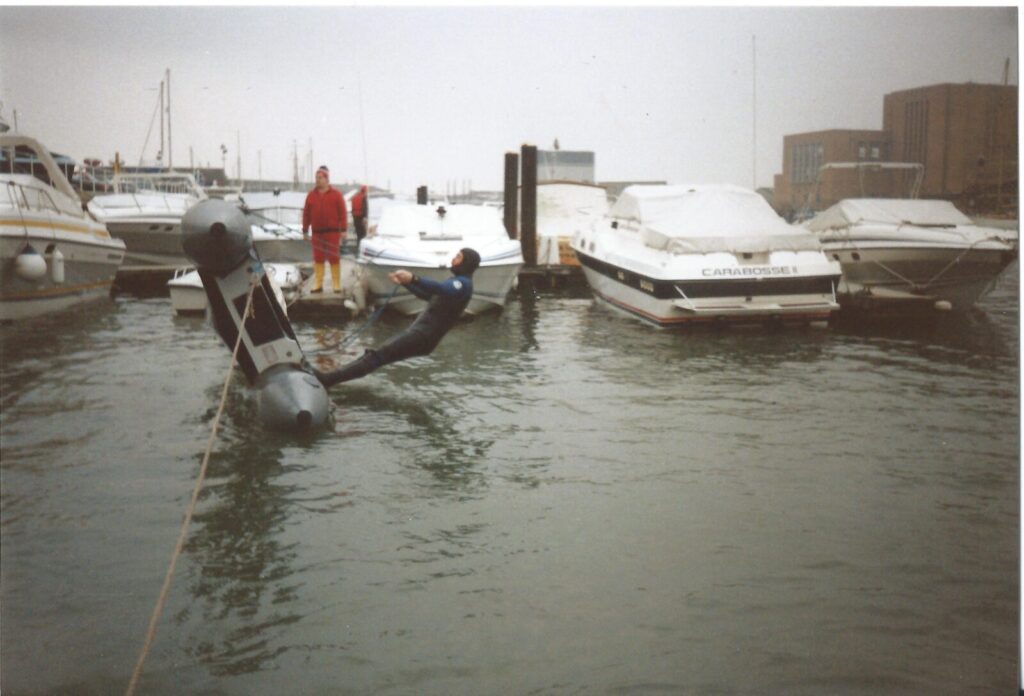
Poole Marina 01st December 1991 capsize drills!
My enthusiasm may have been a tad misplaced if the morning and first activity of the day was anything to go by, the course was started learning how to rite an overturned small boat, in our case a small RIB. It makes perfect sense as I am sure you realise, as, if you are going out in a RIB and do not know how to turn it back the right way up after a capsize, then it wasn’t very sensible going out in the first place………I got that, and to be honest it was a lot of fun climbing up the overturned hull and grabbing one of the rubbing strake hand lines, running the forward mooring line through it and standing up using the leverage of your weight as you lean back to pull the hull back upright! Some of the lighter guys had a more difficult task of it, but we all managed and after a couple of turns each we were ready to kit up and take out a couple of craft for a run in the bay
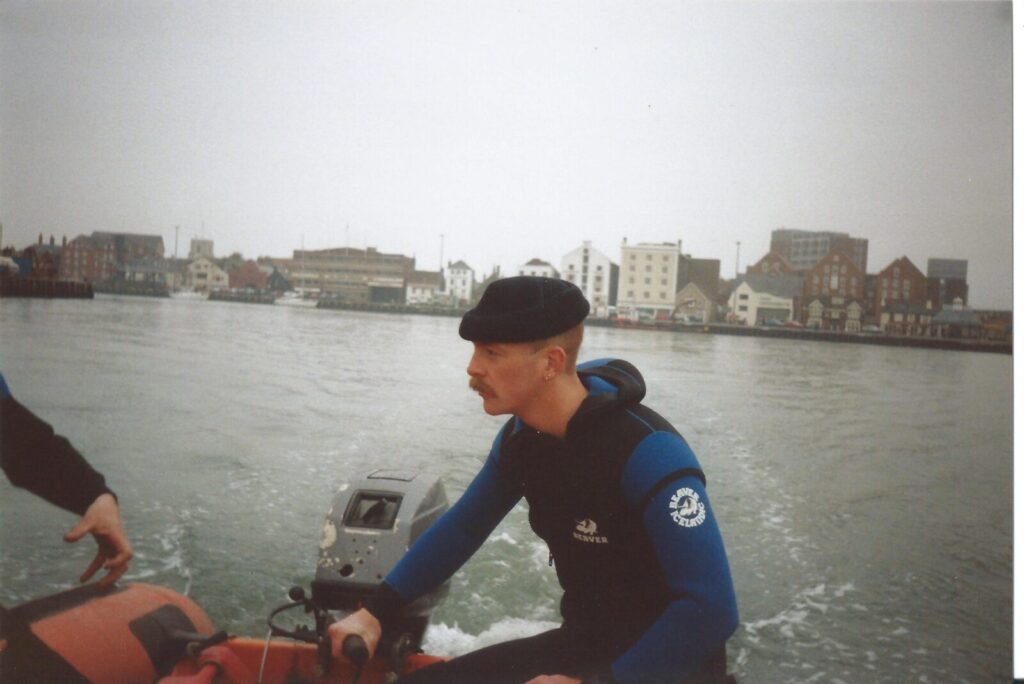
There were a couple of craft we used, a small “Dory” type displacement hull craft, essentially a large rowing boat with a “cuddy” or covered area at the front. This was not an elegant craft, but it was a lot easier to see where you were going, and you were a lot less wet from the spray generated in a headwind than when cox’ing a RIB! We were getting used to being afloat and in charge of small craft, once we had demonstrated some level of competence with the Dory, and a small inflatable (running a small Transom mounted outboard), doing circuits and slow manoeuvres, coming alongside each other, safely, handing across minor bits of kit etc, we headed in for a sandwich and to swap over to a more powerful RIB, sporting a bigger outboard, and far more like what we would be using to dive from in our various dive-clubs
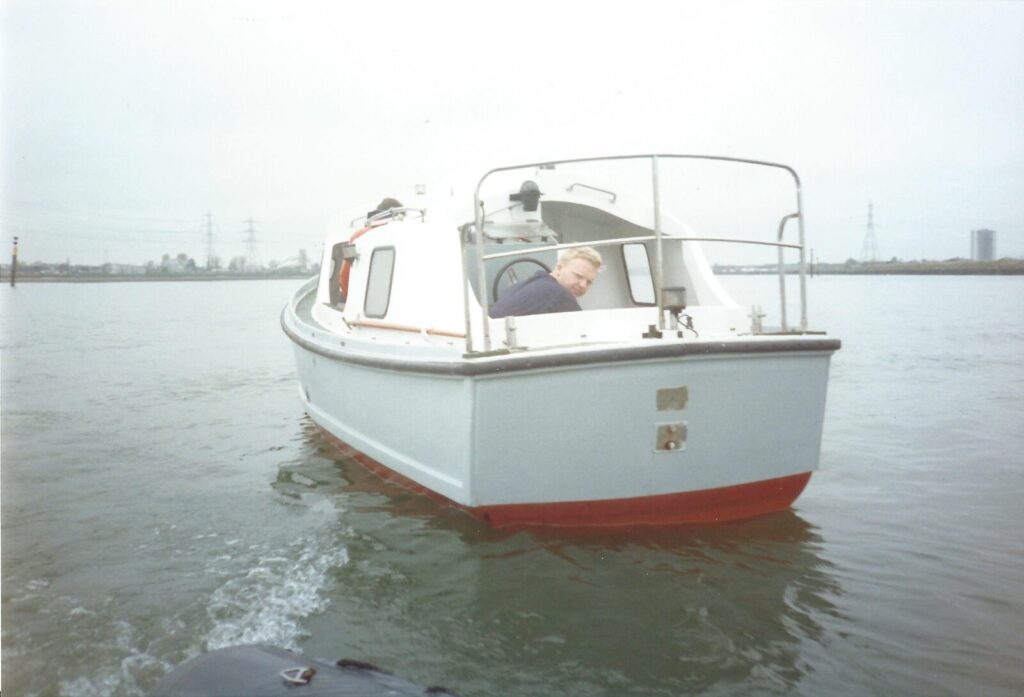
We had all been eagerly looking forward to getting hold of the RIB, it was by far the sexier of the craft we were going to use and each of us had, of course, our own ideas on what it would be like getting up to speed with a “real” dive RIB for the first time!
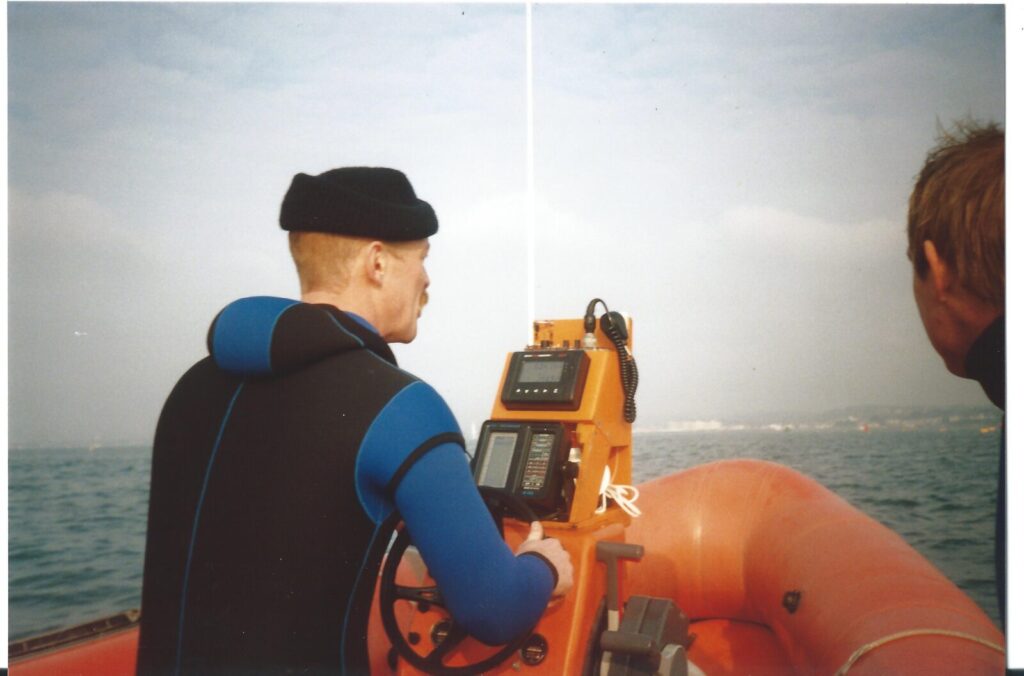
So we each took a turn as Cox (coxswain) and, at first….. gingerly, pushed forward the throttles and felt her rise up and accelerate….she was fast…. then it was getting her to “plane” where the speed of travel lifts the hull higher in the water and less of the hull is therefore in contact with the sea, that, in turn, means less drag from the water and a more ergonomic ride, a quick check of the “trim” of the outboards, making sure they are driving the boat “level” (the outboards not angled either too far down or too far up) so there is less, or better still no, cavitation (where the prop causes “frothing” losing mechanical efficiency) and the RIB is riding “sweet” and you were “off” and allowed to let her rip a little, driving a series of lazy curves and then building some turns, gradually increasing the “ferocity” of the turn to get a feel of the RIB’s capability and your own competence
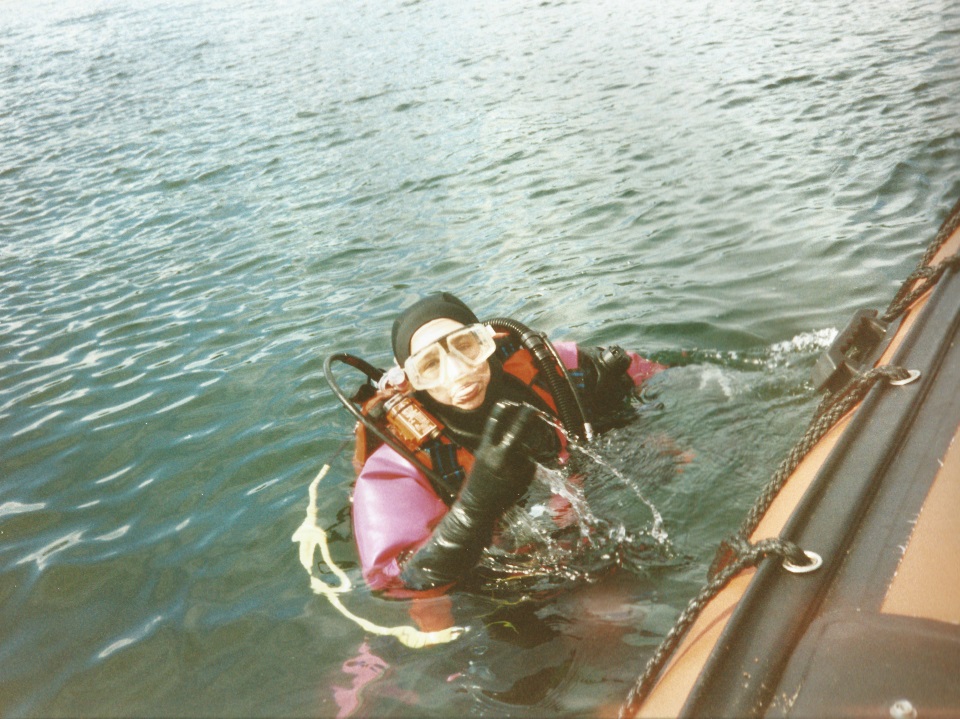
There were drills and skills to complete too, ship to shore (harbour-master) communications on VHF radios and hand-helds, boat to boat transfer, Diver pick-up…… but man overboard was probably the most important of all. The premise being someone, eventually, would fall overboard and everyone on board would need to recognise the event, immediately grasp its seriousness, and do the right thing as soon as humanly possible….that meant shout the event “Man Overboard”….keep the victim in sight…..and indicate by maintaining an outstretched arm “pointing” where he or she was, so the cox could turn the boat around effectively and quickly without anyone losing site of the casualty…..I’ve only ever had to do this as a drill, or during training…..and I thank God for that
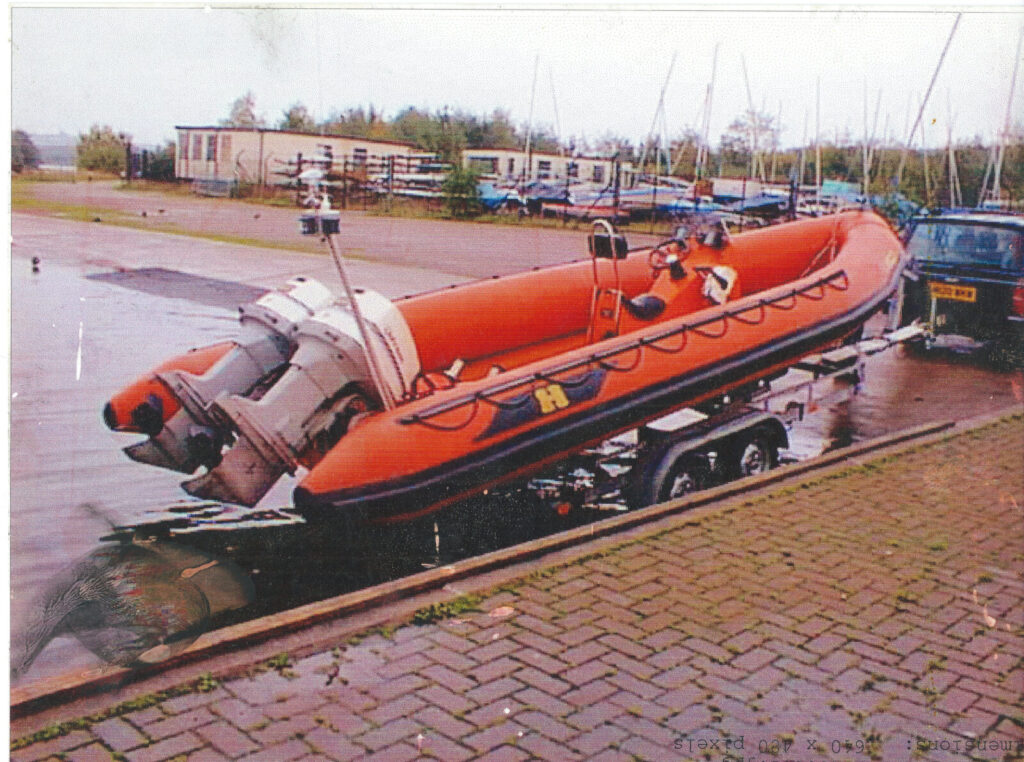
When I eventually bought a RIB, it was based on what I learned in that first boat handling course, and what I had added to that experience handling Inflatables in the South Atlantic on military diving expeditions, handling small working boats in Jamaica in support of marine biology research, and leading boat handling courses at club and military dive expedition levels across the seas of the UK…… and what I’d been taught on the BSAC diver coxswain course I eventually got to take 15/01/1996….what is it with me and cold water ……?

